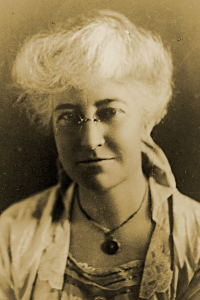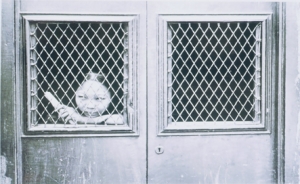The Yellow Slave Trade
Recently, a human trafficking operation was exposed in Florida, in which young Chinese girls were imported under the guise of finding legitimate employment and then made to perform sexual acts from the cover of a massage parlor. It seems times haven’t changed all that much in America from the 1800s. So, it prompted me to repeat and update this post, from 2014.
Soiled Doves is a compendium of prostitution in the early West, and one of the chapters is devoted to the Yellow Slave Trade, a practice much worse than the slavery in the South, which ended with the Civil War.
This slave trade didn’t end until the 1920s. And with recent events in Florida, it seems we haven’t learned our lesson yet.
While researching the original post, I was led to a new suffragette. I love it when I can learn about someone heretofore unknown to me.
Most American women, and possibly, women from other countries, are familiar with the names Susan B. Anthony, Amelia Bloomer, Sojourner Truth, and Louisa May Alcott. These were the women at the forefront of the suffragette movement in America in the 1800’s. It was a fight for the right to vote, as well as a fight for freedom from slavery in the south.
A name that’s not so well known, but every bit as important, is that of Donaldina Cameron. Known at “The Angel of Chinatown”, she devoted her life from age 25 on, to cleaning up the worst that the w est had to offer. And the worst was the “yellow slave trade” in San Francisco. Lincoln freed the black slaves in 1863, but slavery of the Chinese lasted well beyond that. The Mann Act of 1910 finally prohibited the interstate transportation of women for illegal and immoral purposes. It took another ten years or so before the imprisonment of Chinese women ceased.
est had to offer. And the worst was the “yellow slave trade” in San Francisco. Lincoln freed the black slaves in 1863, but slavery of the Chinese lasted well beyond that. The Mann Act of 1910 finally prohibited the interstate transportation of women for illegal and immoral purposes. It took another ten years or so before the imprisonment of Chinese women ceased.
In 1882, the Gold Rush brought over 100,000 Chinese men to the fields in search of wealth. The US government established the Chinese Exclusion Act, which prohibited the men from bringing their families with them. It also prohibited them from marrying anyone other than a Chinese. This set the stage for an active prostitution ring in the city.
Many of these wives and children left behind innocently believed they could reunite with their husbands by agreeing to come to America as indentured servants. The harsh reality was that they sold themselves into a life of prostitution and their children worked as servants until they became old enough to be prostitutes as well. Conditions were so harsh in the cribs of Chinatown that these women had a life span of no more than seven years from the time they were indentured until they mercifully died.
Chinese women have always been considered second-class citizens. Only the males in the family counted. Many families sold their girls into slavery for pennies. They were shipped to California and sold to the highest bidder. Stranded in a country where they didn’t know the language, or have the ability to read it, they each signed a document stating they were to prostitute their bodies for a given term–usually seven years. If, however, during that time, they were sick even one day, two weeks would be added to their indenture. If sick more than one day, one month would be added to their servitude. During the woman’s monthly cycle, she would automatically be “ill” and unable to perform her duties. So every month, one more month was added, meaning she would never be free until she died or became too old for prostitution.
Unless the girl was exceptionally beautiful and became the toy of a wealthy merchant, the lot of these women was to be placed in a crib in Chinatown. The cribs were two small rooms occupied by as many as six women at a time. They took turns standing in front of the caged opening, dressed only in a silk blouse, enticing men with a display of their charms and voice. The average crib girl lasted only six years. Many of these women became fearful and lashed out in anger toward anyone. When this happened, they were chained to a bed and fed narcotics, usually opium, until they calmed down and began to work again.
Into this evil underbelly of Chinatown walked Donaldina Cameron. She was a missionary, who accepted a position with the Presbyterian Mission House to teach sewing to the residents of the house in order to give these women an occupation. But it didn’t take her long to realize these women needed more help than to learn how to sew. She spent many a night with the police in Chinatown, searching brothels with the hope of finding imprisoned Chinese women. She took the women from their squalid conditions and hid them until their “owners” gave up the search. Donaldina made many powerful enemies while performing this valuable service, yet she chose to stay at the Mission beyond her one-year missionary assignment. Her service to the Mission and to the enslaved Chinese women became a lifelong mission. She stood up to the tyrannical gangs who ruled Chinatown and profited from the women.
After the 1906 earthquake in San Francisco, the Mission House was destroyed. Donaldina made certain all her records were safe before she left the premises. The House was rebuilt and given a new name–the Cameron House, in her honor. Donaldina continued her work there until she retired in 1934. She is credited with saving nearly 3000 girls from the harsh life of a crib prostitute. But who was Donaldina, the “Angel of Chinatown?”
Donaldina was a Scot, born in New Zealand, who emigrated to California with her family when she was five. She was a soft-spoken woman. Not at all what you’d expect from someone willing to take on the lords of Chinatown. But she was known to chop down doors with an ax in order to rescue a girl. She became adept at finding girls who had been hidden under trap doors or behind false walls. The men who ran these prostitution rings, the Tongs, told the girls Donaldina was a mad woman who would drink their blood. But the girls learned to trust her, calling her Lo Mo, or beloved mother. Once her reputation was established, friends and relatives of the girls began leaving word at the Presbyterian House with information on where they could be found and rescued. She fought for the freedom of the girls she rescued in the courts and became an outspoken advocate of the rights of this segment of the San Francisco population.
Once the girls were freed, they lived at the Presbyterian House and learned English and housekeeping skills, so they could be integrated into American society. They could not leave the House without an escort. The women were allowed to leave the home only if they married a Christian man who met with the approval of Donaldina. She also founded two orphanages for Chinese children, who were often the offspring of the women she rescued
The mission of Cameron House has changed over the years and is now a comprehensive family service organization serving low income Asian immigrants, and families in San Francisco. It is located at 920 Sacramento Street, San Francisco, CA 94108
https://stargazermercantile.com/woman-mission-donaldina-cameron/
http://www.sfhistoryencyclopedia.com/articles/c/cameronDonaldina.html
http://www.cameronhouse.org/aboutUs/history.html
Soiled Doves–Prostitution in the Early West, by Anne Seagraves
http://fiercecompassionbook.com A Biography of Abolitionist Donaldina Cameron
https://en.wikipedia.org/wiki/Donaldina_Cameron
_______________________________________________________________________________________
Becky Lower loves to write stories about feisty women who help change history. Visit her website at https://www.beckylowerauthor.com to read about her latest endeavors.


very interesting and enlightening article!!
LikeLiked by 2 people
You always come up with something fresh, new, and most of all, informative. Becky, you are right on!
>
LikeLiked by 2 people
Fascinating! Great article on a subject that has received far too little attention.
LikeLike
Yes, Linda, I agree. I had skimmed through my copy of Soiled Doves years ago when I got it, but there were so many tales of heartbreak that I had to stop reading it. But the Crib girls’ story stayed with me. And Donaldina certainly has earned my utmost respect.
LikeLiked by 1 person
Amazing story. What a difference one determined person can make!
LikeLiked by 2 people
Thanks, Jude, for stopping by today. I agree, saving 3000 ladies was no small feat. Some people chafed against her rules about not leaving the house without an escort, or marrying a Christian man she had to approve of, but I have a new heroine!
LikeLiked by 1 person
Could you please give author, publication date, etc., for the book Soiled Doves? There are a number of books with that title in WorldCat, and I’m wondering which one it is. Thank you.
LikeLike
My mistake, leaving that information off the post. Thanks for catching it. The book is called Soiled Doves–Prostitution in the Early West, by Anne Seagraves. Really a well done documentation of these women, who did what they had to, to survive in the rough and tumble west.
LikeLike
Thank you!
LikeLike
This was interesting. Thank you.
LikeLike
It is heartbreaking how cruel we can be to our fellow (wo)man. So awful.
LikeLike
The plight of the Chinese in America kind of mirrors the plight of the American Indian, and the black slaves in the south. Just a different skin color. When will we learn?
LikeLike
Excellent article, Becky! This brought to mind a wonderful film that tells the story of one young Chinese woman’s journey from slavery to freedom in nineteenth century America. It is titled Thousand Pieces of Gold (1991) and stars Chris Cooper and Rosalind Chao. I highly recommend it.
LikeLike
Very enlightening article. I’ve been a fan of Hell on Wheels and have found this season’s emphasis on the Chinese surprising and sad. I am woefully ignorant of the plight of these immigrants/slaves and appreciated your research.
LikeLike
Thanks for enlightening me, Becky. Excellent post.
LikeLike
Glad you joined us, Kym. This was a whole new territory for me, and I have the utmost respect for Donaldina and other brave women like her.
LikeLike
I real pleasure and so important to look at when we are in the midst of another anti-immigrant frenzy.
LikeLike